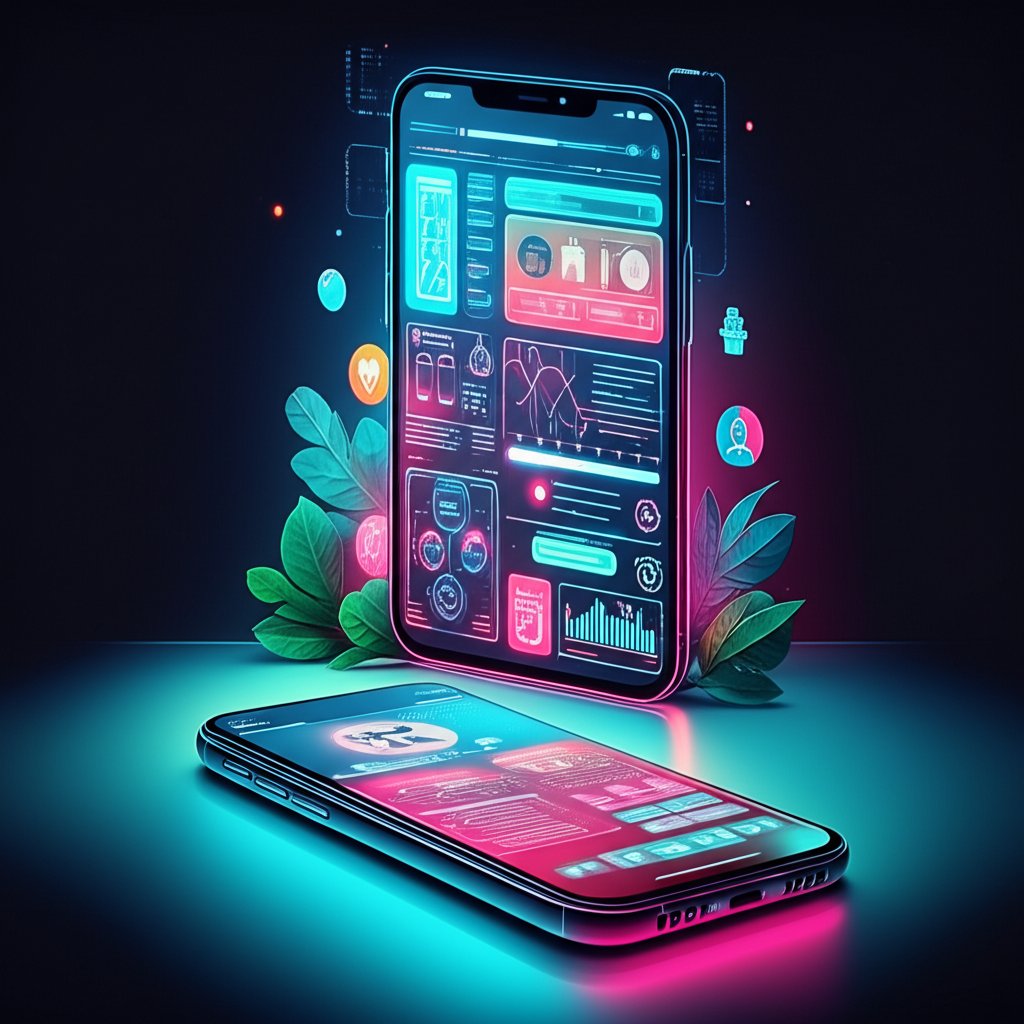Finding it tough to keep track of your Medicare information, especially when you’re away from home? A Medicare mobile app can be a game-changer, putting essential healthcare details right at your fingertips. From checking your coverage to finding a doctor, the right app simplifies Medicare management.
At a glance:
- Discover the benefits of using a Medicare mobile app for convenient healthcare management.
- Learn how to access and navigate the official Medicare app and understand its core features.
- Explore alternative third-party apps that complement the official app and offer unique functionality.
- Understand security measures and best practices to protect your personal health information within the app.
- Troubleshoot common app issues and find solutions for a seamless experience.
Why Use a Medicare Mobile App? Convenience and Control
Managing healthcare can feel like a full-time job. Between appointments, prescriptions, and understanding your coverage, it’s easy to feel overwhelmed. A Medicare mobile app offers a centralized and convenient way to:
- Access your Medicare card digitally: No more scrambling to find your physical card.
- Check your coverage details: Quickly see what services are covered under your plan.
- Track your claims: Monitor the status of your submitted claims and review payment information.
- Find doctors and pharmacies: Locate nearby providers that accept your Medicare plan.
- Review your health information: Access your medical history and other relevant health data.
Imagine needing to confirm your prescription coverage while at the pharmacy. Instead of calling Medicare or digging through paperwork, you can simply open the app and find the answer within seconds. This instant access to information empowers you to make informed decisions about your healthcare.
Understanding the Official Medicare Mobile App
The official Medicare app, often provided by Medicare directly or through your specific Medicare Advantage plan, is your primary resource for managing your benefits. Here’s a breakdown of key features:
- Download and Registration: Usually available on both the App Store (iOS) and Google Play Store (Android). Registration typically requires your Medicare number, date of birth, and zip code.
- Core Features: Expect to find sections for viewing your coverage, checking claims, finding providers, and accessing your digital Medicare card.
- Navigating the App: The app’s interface is designed to be user-friendly. Look for clear menus and search functions to easily find the information you need. Many apps use icons and color-coding to improve navigation.
- Personalization: Some apps allow you to personalize your experience by saving your preferred doctors or setting up notifications for important updates.
Example: Sarah, a Medicare beneficiary, downloaded the official Medicare app provided by her Medicare Advantage plan. She quickly found her digital Medicare card, which she used at her next doctor’s appointment, saving her the hassle of searching for her physical card.
Exploring Third-Party Mobile Apps for Enhanced Medicare Management

While the official Medicare app is essential, several third-party apps can enhance your experience by offering additional features:
- Prescription Management Apps: These apps help you track your medications, order refills, and compare prices at different pharmacies. Examples include GoodRx and WellRx.
- Health Tracking Apps: Some apps integrate with wearable devices to track your activity levels, sleep patterns, and other health metrics. This data can be valuable for managing your overall health and discussing your progress with your doctor. MyFitnessPal is a popular choice.
- Telehealth Apps: Connect with doctors and other healthcare providers remotely through video consultations. Teladoc and Amwell are examples of telehealth platforms that may be covered by your Medicare plan.
Before using a third-party app, ensure it is reputable and secure. Read reviews and check the app’s privacy policy to understand how your data will be used.
Security Tip: Always use strong, unique passwords for all your healthcare apps. Consider enabling two-factor authentication for added security.
Securing Your Health Information: Best Practices
Protecting your personal health information is crucial when using any mobile app. Implement these security measures:
- Strong Passwords: Use complex passwords that are difficult to guess. Avoid using the same password for multiple accounts.
- Two-Factor Authentication (2FA): Enable 2FA whenever possible. This adds an extra layer of security by requiring a code from your phone or email in addition to your password.
- Regular App Updates: Keep your apps updated to the latest versions. Updates often include security patches that protect you from vulnerabilities.
- Privacy Settings: Review the privacy settings of each app and customize them to your preferences. Limit the amount of personal information you share.
- Beware of Phishing: Be cautious of emails or text messages that ask for your personal information. Never click on suspicious links or download attachments from unknown sources.
Case Snippet: John received an email that appeared to be from his health insurance provider, asking him to update his account information. He noticed the email address was slightly different from the official website and realized it was a phishing attempt. He reported the email and avoided providing any personal information.
Learn about mobile banking. Mobile banking has robust security features that you can learn from.
Troubleshooting Common Medicare App Issues

Encountering issues with your Medicare mobile app? Here’s a quick troubleshooting guide:
- App Won’t Open: Ensure you have a stable internet connection. Try closing and reopening the app. If the problem persists, try restarting your device or uninstalling and reinstalling the app.
- Login Problems: Double-check your login credentials. If you’ve forgotten your password, use the “Forgot Password” link to reset it.
- Data Not Updating: Sometimes, data may take a few minutes to update. Try refreshing the app or logging out and logging back in.
- App Crashing: If the app crashes frequently, try clearing the app’s cache and data in your device’s settings. If that doesn’t work, contact the app’s support team for assistance.
Example: Maria was having trouble logging into her Medicare app. She realized she was using an outdated version of the app. After updating to the latest version, she was able to log in successfully.
A Practical Playbook: Getting Started with Your Medicare App
Here’s a step-by-step guide to help you get started with your Medicare mobile app:
- Identify your needs: Determine which features are most important to you (e.g., checking coverage, finding providers, managing prescriptions).
- Download the official app: Search for the official Medicare app or the app provided by your Medicare Advantage plan in the App Store (iOS) or Google Play Store (Android).
- Register your account: Follow the on-screen instructions to create an account using your Medicare number, date of birth, and zip code.
- Explore the app’s features: Familiarize yourself with the different sections and features available in the app.
- Customize your settings: Set up notifications, save your preferred doctors, and adjust privacy settings to your preferences.
- Consider third-party apps: Explore additional apps that can enhance your Medicare management experience.
- Prioritize security: Use strong passwords, enable two-factor authentication, and keep your apps updated.
Decision Tree:
- Need to check your coverage? Use the official Medicare app’s coverage section.
- Need to find a doctor? Use the official Medicare app’s provider search feature.
- Need to manage your prescriptions? Consider using a prescription management app like GoodRx.
- Concerned about security? Enable two-factor authentication and keep your apps updated.
Quick Answers: Common Questions About Medicare Mobile Apps
Q: Is the official Medicare app free?
A: Yes, the official Medicare app is typically free to download and use. However, data charges may apply depending on your mobile data plan.
Q: Can I use the app to pay my Medicare premiums?
A: This depends on your specific Medicare plan. Some apps allow you to pay your premiums directly through the app, while others may require you to pay through the Medicare website or by mail.
Q: What if I don’t have a smartphone?
A: If you don’t have a smartphone, you can still access your Medicare information online through the Medicare website or by calling Medicare directly.
Q: Is my information secure in the app?
A: Official Medicare apps and reputable third-party apps use encryption and other security measures to protect your personal health information. However, it’s essential to follow best practices for security, such as using strong passwords and enabling two-factor authentication.
Take Control of Your Healthcare
A Medicare mobile app puts the power of healthcare management in your hands. By understanding the features of the official app, exploring third-party options, and prioritizing security, you can enjoy a more convenient and informed experience. Start exploring your options today and take control of your healthcare journey.
- Why an App Appeared on My Phone Unexpectedly - November 22, 2025
- How to Stop Unwanted Apps from Automatically Downloading on Android - November 21, 2025
- Why Are Android Games Installing Themselves on Your Phone? - November 20, 2025










